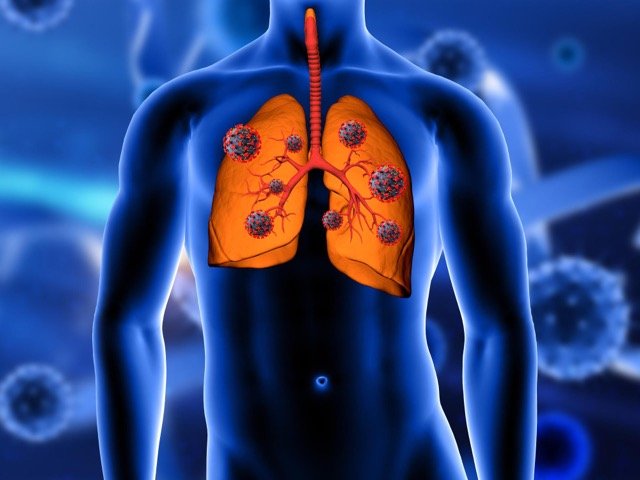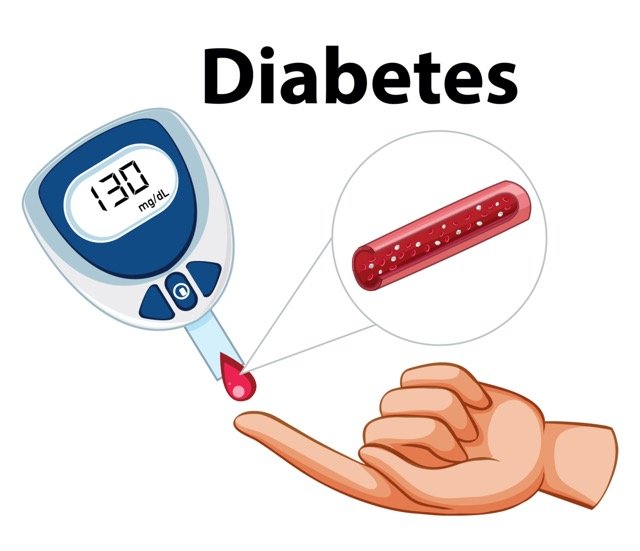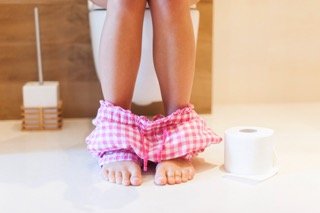Polyethylene glycol Electrolyte Solution is an osmotically active laxative that is used to cleanse the bowels before colonoscopic procedures and toxic ingestions.
Polyethylene glycol Uses:
- Bowel cleansing:
- Bowel cleansing prior to colonoscopy or barium enema X-ray examination
- Off Label Use of Polyethylene glycol in Adults:
- Whole bowel irrigation for toxic ingestions
Polyethylene glycol Dose in Adults
Polyethylene glycol Dose in the treatment of Bowel cleansing:
- CoLyte, GaviLyte-C, GaviLyte-G, GaviLyte-N, GoLYTELY, NuLYTELY, TriLyte:
- Oral: 240 mL (8 oz) every 10 minutes until 4 L are consumed or the rectal effluent is clear; rapid drinking of each portion is preferred to drinking small amounts continuously.
- Nasogastric: 20-30 mL per minute until 4 L are administered or the rectal effluent is clear
- MoviPrep: Oral: Administer 2 L total with an additional 1 L of clear fluid prior to colonoscopy as follows:
- Split dose (2-day regimen) (preferred method):
- Dose 1:
- The evening before colonoscopy (10 to 12 hours before dose 2):
- 240 mL (8 oz) every 15 minutes until 1 L (entire contents of the container) is consumed.
- Then fill the container with 480 mL (16 oz) of clear liquid and consume prior to going to bed.
- The evening before colonoscopy (10 to 12 hours before dose 2):
- Dose 2:
- On the morning of the colonoscopy (beginning at least 3.5 hours prior to procedure):
- 240 mL (8 oz) every 15 minutes until 1 L (entire contents of the container) is consumed.
- Then fill the container with 480 mL (16 oz) of clear liquid and consume at least 2 hours before the procedure.
- On the morning of the colonoscopy (beginning at least 3.5 hours prior to procedure):
- Dose 1:
- Evening only dose (1-day regimen) (alternate method):
- Dose 1:
- The evening before colonoscopy (at least 3.5 hours before bedtime):
- 240 mL (8 oz) every 15 minutes until 1 L (entire contents of the container) is consumed
- The evening before colonoscopy (at least 3.5 hours before bedtime):
- Dose 2:
- ~90 minutes after starting dose 1:
- 240 mL (8 oz) every 15 minutes until 1 L (entire contents of the container) is consumed.
- Then fill the container with 1 L (32 oz) of clear liquid and consume all of the liquid prior to going to bed.
- ~90 minutes after starting dose 1:
- Dose 1:
- Split dose (2-day regimen) (preferred method):
Plenvu: Oral:
Note: Two doses are required; may use either a “Two-Day” or “One-Day” dosing regimen:
- Split dose (2-day regimen):
- Dose 1:
- The evening before colonoscopy (~4 pm to 8 pm):
- 480 mL (16 oz) consumed over 30 minutes (entire contents of the container). Then fill the container with 480 mL (16 oz) of clear liquid and consume all of the liquid over the next 30 minutes; consume additional clear liquids during the evening.
- The evening before colonoscopy (~4 pm to 8 pm):
- Dose 2:
- On the morning of the colonoscopy (~4 am and 8 am [~12 hours after the start of Dose 1]):
- 480 mL (16 oz) consumed over 30 minutes (entire contents of the container). Then fill the container with 480 mL (16 oz) of clear liquid and consume all of the liquid over the next 30 minutes; consume additional water or clear liquids up to 2 hours before the procedure.
- On the morning of the colonoscopy (~4 am and 8 am [~12 hours after the start of Dose 1]):
- Dose 1:
- One-day only morning dose (1-day regimen):
- Dose 1:
- Morning of colonoscopy (~3 am and 7 am):
- 480 mL (16 oz) consumed over 30 minutes (entire contents of the container).
- Then fill the container with 480 mL (16 oz) of clear liquid and consume all of the liquid over the next 30 minutes.
- Morning of colonoscopy (~3 am and 7 am):
- Dose 2:
- Morning of colonoscopy (minimum of 2 hours after the start of dose 1):
- 480 mL (16 oz) consumed over 30 minutes (entire contents of the container).
- Then fill the container with 480 mL (16 oz) of clear liquid and consume all of the liquid over the next 30 minutes; consume additional water or clear liquids up to 2 hours before the procedure.
- Morning of colonoscopy (minimum of 2 hours after the start of dose 1):
- Dose 1:
Polyethylene glycol Dose in the treatment of Whole bowel irrigation (off-label):
- Nasogastric:
- 1,500 to 2,000 mL per hour until the rectal effluent is clear.
- Note: Continue treatment at least until the rectal effluent is clear.
- The treatment duration may be extended based on corroborative evidence of the continued presence of poisons in the GI tract as determined by radiographic means or the presence of the poison in the effluent.
Polyethylene glycol Dose in Childrens
Polyethylene glycol Dose in the treatment of Bowel cleansing (to prevent excessive fluid and electrolyte changes:
Use only products containing supplemental electrolytes for bowel cleansing
- The patient should fast at least 2 hours (preferably 3 to 4 hours) prior to ingestion:
- Infants ≥6 months, Children, and Adolescents:
- Oral, nasogastric: GaviLyte-N, NuLYTELY, and TriLyte:
- 25 mL per kg per hour until the rectal effluent is clear (usually in ~4 hours).
- Oral, nasogastric: GaviLyte-N, NuLYTELY, and TriLyte:
- Infants ≥6 months, Children, and Adolescents:
Polyethylene glycol Dose in the treatment of Fecal impaction; slow disimpaction:
- Children> 2 years and Adolescents:
- Oral, Nasogastric:
- 20 mL per kg per hour up to a maximum dose of 1 L per hour for 4 hours per day for 2 days.
- Oral, Nasogastric:
Polyethylene glycol Dose in the treatment of Toxic ingestion: Nasogastric:
- Infants ≥9 months and Children <6 years:
- 500 mL per hour until the rectal effluent is clear
- Children ≥6 years:
- 1,000 mL per hour until the rectal effluent is clear
- Adolescents:
- 1,500 to 2,000 mL per hour until the rectal effluent is clear
Note: Continue treatment at least until the rectal effluent is clear; treatment duration may be extended based on corroborative evidence of the continued presence of poisons in the GI tract as determined by radiographic means or the presence of the poison in the effluent.
Polyethylene glycol Pregnancy Category C
- No studies have been conducted on animal reproduction. Information regarding pregnancy and the use of polyethylene glycol electrolyte solutions during pregnancy is not available.
- Colonoscopy should not be performed in pregnancy if there are life-threatening circumstances or very strong indications.
Use polyethylene glycol while breastfeeding
- It is unknown if breast milk contains polyethylene glycol-electrolyte.
- According to the manufacturer of the product, when deciding whether to continue or stop breastfeeding during therapy, it should consider the risks to infant exposure, the benefits to the infant and the benefits to the mother.
Dose in Kidney Disease:
- The manufacturer has not provided any data regarding dosage adjustments.
- Use with caution in patients with kidney disease due to the risk of fluid and electrolyte abnormalities.
Dose in Liver disease:
The manufacturer has not Provided any data regarding dosage adjustments in patients with liver disease.
Common Side Effects of Polyethylene glycol:
- Central Nervous System:
- Sleep Disorder
- Rigors
- Malaise
- Endocrine & Metabolic:
- Increased Thirst
- Gastrointestinal:
- Epigastric Fullness
- Nausea
- Abdominal Pain
- Hunger
- Abdominal Distention
- Anorectal Pain
- Bloating
Less Common Side Effects Of Polyethylene Glycol:
- Cardiovascular:
- Hypertension
- Central Nervous System:
- Fatigue
- Headache
- Dizziness
- Endocrine & Metabolic:
- Dehydration
- Electrolyte Disorder
- Gastrointestinal:
- Vomiting
- Hiatal Hernia
- Upper Abdominal Pain
- Abdominal Distress
- Dyspepsia
- Gastritis
- Genitourinary:
- Decreased Estimated GFR
- Respiratory:
- Nasopharyngitis
Frequency of Side effects Not Defined:
- Endocrine & Metabolic:
- Increased Serum Calcium
- Increased Serum Phosphate
- Increased Serum Sodium
- Increased Uric Acid
- Decreased Serum Bicarbonate
- Hyperchloremia
- Hypermagnesemia
- Serum Hyperosmolarity
- Gastrointestinal:
- Abdominal Cramps
- Renal:
- Decreased Creatinine Clearance
- Increased Blood Urea Nitrogen
Contraindications to Polyethylene glycol:
- Hypersensitivity to any component of the polyethylene glycol-electrolyte solutions or any other component of the formulation
- Ileus, gastric retention, bowel perforation, and gastrointestinal obstruction are all possible.
Canadian labeling: Additional contraindications not in US labeling
- An acute abdominal surgical condition, such as diverticulitis or acute appendicitis.
- Patients not aware
Warnings & Precautions
- Arrhythmias
- Rarely, severe arrhythmias have been caused by the use of ionic-osmotic drugs. Patients with electrolyte disorders and other risk factors for cardiac disease are at greater risk.
- Patients at high risk for cardiac arrhythmias should be supervised (eg patients with a history or prolonged QT, recent myocardial injury, unstable angina and heart failure, cardiomyopathy, uncontrolled rhythms, or electrolyte imbalance).
- Patients at high risk for serious cardiac arrhythmias should be aware of the importance of ECGs pre- and post-colonoscopy.
- Atypical electrolyte and fluid conditions:
- Patients should be advised to drink enough water before, during, after treatment.
- Patients who are taking diuretics, ACE inhibitors, or ARBs with concomitant medications should be cautious.
- Fluid or electrolyte disturbances may cause seizures, arrhythmias, and renal impairment.
- Make sure you have corrected any electrolyte or fluid imbalances before you begin treatment.
- Consider post-colonoscopy lab testing (electrolytes and creatinine) if the patient experiences severe vomiting or becomes dehydrated after treatment.
- Hypersensitivity
- Angioedema, rash and anaphylaxis may be signs of serious hypersensitivity reactions.
- Hypersensitivity reactions should be treated immediately and the appropriate therapy started.
- Ischemic colitis, mucosal and mucosal-aphthous ulcerations
- Ischemic colitis has been reported in some cases. The risk can be increased by using stimulant laxatives in combination.
- If you are treating patients with inflammatory bowel diseases, it is important to be aware of the possibility that there may be mucosal or aphthous obstructions.
- Seizures
- Patients with no history of seizures have rarely experienced generalized tonic-clonic seizures or loss of consciousness.
- Electrolyte abnormalities such as hypokalemia or hypocalcemia could cause seizures.
- These problems were corrected by electrolyte and fluid anomalies.
- Patients with a history or increased risk of seizures, such as patients who have taken benzodiazepines or medications that lower their seizures thresholds, concomitantly taking benzodiazepines or other medications, and patients with hyponatremia (or low serum osmolality) should be cautious.
- Perforation and GI obstruction
- If you suspect GI obstruction, perforation or other issues, perform appropriate diagnostic tests.
- The impaired have a gagging reflex.
- You should observe patients who are semiconscious or unconscious and have impaired gag reflexes, other swallowing abnormalities or those who are prone to regurgitation.
- Take Care.
- Renal impairment
- Patients with kidney impairment or those taking medication that can adversely affect their renal function (eg, NSAIDs and ACE inhibitors, diuretics and ARBs) should be cautious.
- Patients should be adequately hydrated prior, during, and following treatment.
- Pre-dose and postcolonoscopy lab tests (electrolytes creatinine, BUN) should be considered.
- Ulcerative colitis
- Patients with severe ulcerative colitis should be cautious.
Polyethylene glycol electrolyte solution: Drug Interaction
|
Bisacodyl |
May enhance the adverse/toxic effect of Polyethylene Glycol-Electrolyte Solution. |
|
Senna |
May enhance the adverse/toxic effect of Polyethylene Glycol-Electrolyte Solution. |
|
Sodium Picosulfate |
May enhance the adverse/toxic effect of Polyethylene Glycol-Electrolyte Solution. |
Monitoring parameters:
- BUN, creatinine, electrolytes (at baseline and post colonoscopy in patients with renal impairment or as clinically indicated);
- Children less than 2 years of age should be monitored for hypoglycemia, dehydration, hypokalemia serum glucose, urine osmolality;
- ECG (at baseline and post colonoscopy in patients at risk for serious cardiovascular arrhythmias);
Whole bowel irrigation:
- Rectal effluent (continue until clear or the poison is completely removed).
How to administer Polyethylene glycol?
Oral:
- It's better to consume small amounts of water every day than large quantities.
- Polyethylene glycol electrolyte solutions shouldn't be flavored with other ingredients than those listed.
- To improve palatability, the solution can be refrigerated. Infants shouldn't be exposed to chilled solutions.
- Additional measures to improve tolerance include sucking on lemon slices, sugar-free menthol candy droplets, and drinking the solution through a straw.
- If you feel severe abdominal pain, stop drinking the solution.
- Oral medications should be administered within an hour of the therapy having begun.
GaviLyte - GaviLyte - N, GoLYTELY, NuLYTELY, CoLyte, GaviLyte - C, GaviLyte - G, TriLyte :
- Patients who are unable or unwilling to drink the solution can have it administered by a nasogastric tube.
Mechanism of action of Polyethylene glycol:
It induces catharsis by strong electrolyte and osmotic effects.
The onset of effect:
- Oral: About 1 to 2 hours
International Brand Names of Polyethylene glycol:
- Colyte
- GaviLyte-C
- Plenvu
- TriLyte
- Klean-Prep
- Moviprep
- PegLyte
- GaviLyte-G
- GaviLyte-N
- GoLYTELY
- MoviPrep
- NuLYTELY
- Barex
- Cleargol
- Coloclean
- Colofortl
- Delcoprep
- Endofalk
- Endopeg
- Gangiden
- Glycoprep
- Golytely
- GoLytely
- Icolon
- Iscolan
- Klean Prep
- Klean-Prep
- Laxacon
- Laxido
- Macrovic
- Molaxole
- Movicol
- Colonsoft
- Colopeg
- CosmoCo
- Moviprep
- Movyprep
- Moxalole
- NuLytely
- Oralav
- Osmolax
- Peglyte
- ShuTaiQing
- Transipeg
Polyethylene glycol Brand Names in Pakistan:
There is no brand available in Pakistan.







